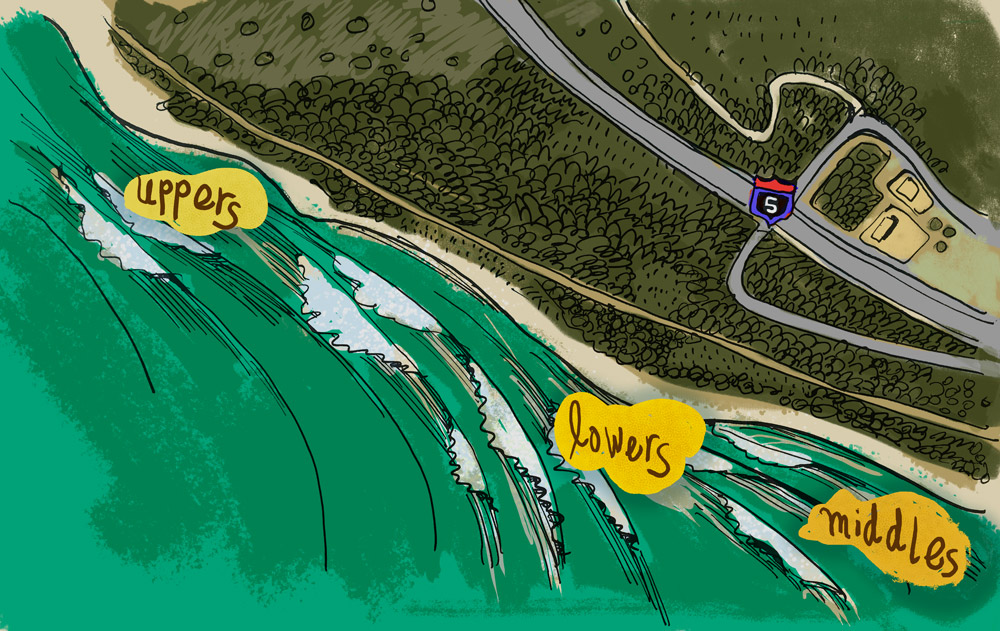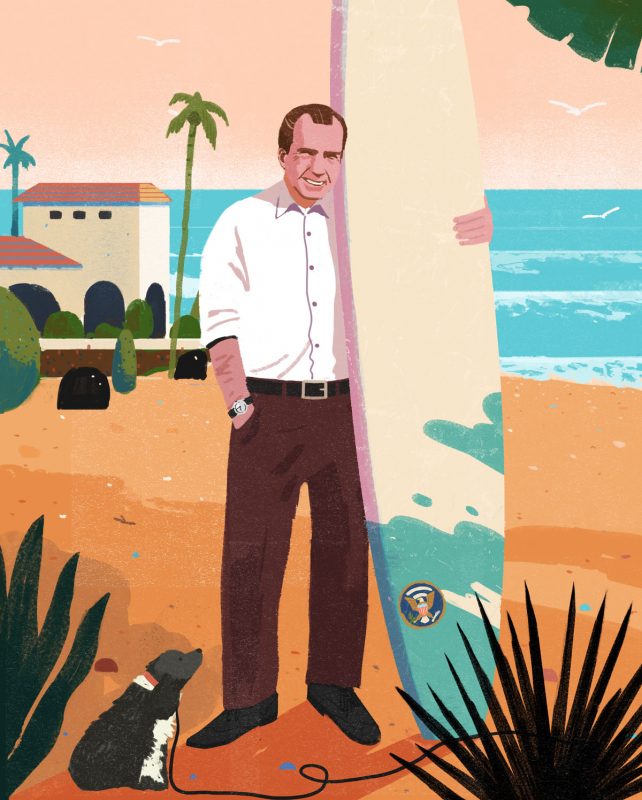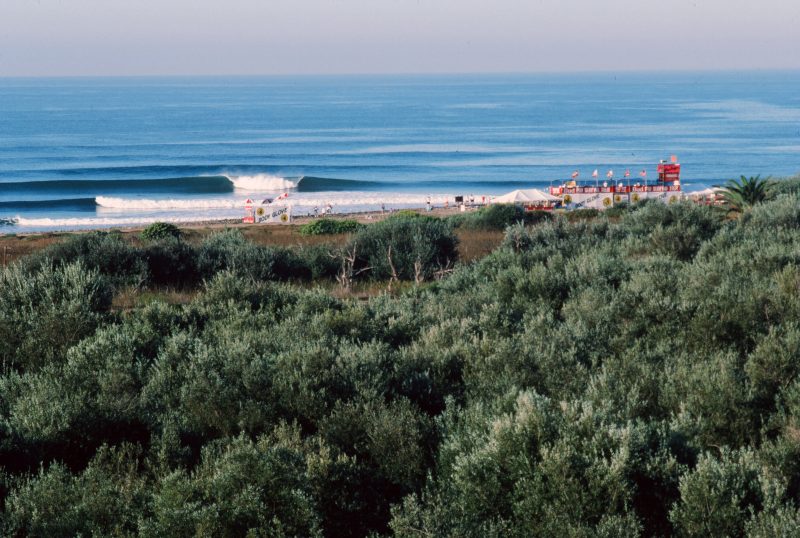Editor’s Note – The Trestles Issue

Fifty miles north of San Diego is an expanse of ocean front, sand and cobblestones named after a railroad bridge. How did this spot, called “Trestles,” become the most important place to surf in the continental United States? We thought it would be fun to explore that question in this debut of Twenty, a magazine for anyone curious about the sport of surfing.
It begins with the 37th President of the United States, Richard Nixon, who owned a compound just steps from Trestles while he was in the White House. One “beautiful sunny day,” as Nixon’s aide John Ehrlichman remembered it, the President walked along a stretch of sand controlled by the U.S. military and suggested the “clean ocean water” should be open to the public. Exactly why remains a bit of a mystery, as writer Alex Roth explains: “Like many stories involving the only U.S. president to resign from office, this one involves political calculations, feelings of betrayal and possible ulterior motives.”

Richard Nixon illustration by Xiao Hua Yang
Nixon’s decision had a significant impact on surfing around the world. Trestles’ clean, consistent waves provided a canvas for athletes to test what was possible on a surfboard and broaden the sport’s appeal in the coming decades. Illustrator Alvar Sirlin captures some of those moments in his distinctive style. Perhaps the most notable is the first pro victory for an 18-year-old Kelly Slater. We compiled an oral history of Slater’s 1990 Trestles win with help from the 11-time world champion.

Kelly Slater up on stage, hoisting his first pro winner’s check. Photo: Body Glove/Mike Balzer
Trestles today stands as a rare example of what the California coast looked like in the early part of the 20th century, when surfing was a new import from Hawaii and not yet a widespread part of American culture. Photographer Chris Ortiz offers a visual guide to this iconic place, and oceanographer Falk Feddersen explains why Trestles’ waves got so good in the first place. Dr. Feddersen, who has surfed Trestles roughly 10 times, can confirm the site lives up to its reputation.

Trestles looks the same today as it did decades ago. A view of Trestles in September 1990. Photo: Body Glove/Mike Balzer
We started Twenty, which stands for the highest score once can achieve in a round of competitive surfing, because we believe all surfers deserve a publication to call their own. The pursuit of excellence belongs to everyone as we enter the water for the first time and embrace the power of trying something new.
By Dan Fitzpatrick, editor